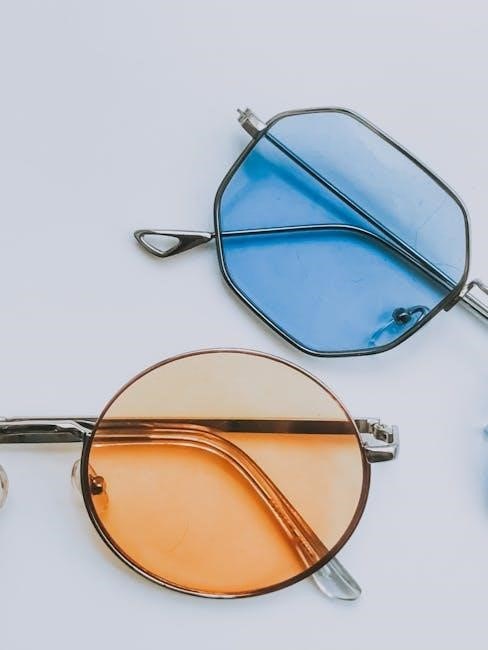Choosing the right sunglass lens color enhances vision‚ comfort‚ and style. Different tints optimize clarity‚ reduce glare‚ and protect from UV rays‚ ensuring the perfect fit for your lifestyle and activities.

Factors Influencing Lens Color Choice
When selecting sunglass lens colors‚ consider lifestyle‚ activities‚ and lighting conditions. Factors like UV protection‚ glare reduction‚ contrast enhancement‚ and personal style shape the ideal choice for optimal vision and comfort.
2.1 UV Protection
UV protection is a critical factor when choosing sunglass lens colors. Darker tints‚ such as gray‚ brown‚ or amber‚ generally offer superior UV protection by absorbing more light. However‚ UV protection isn’t solely dependent on color; the quality of the lens matters most. Look for lenses that block 99-100% of UVA and UVB rays. While lighter tints may appeal aesthetically‚ they often provide less UV protection. Tint intensity and polarization also play roles‚ with polarized lenses reducing glare from reflective surfaces like water or snow. Always prioritize UV-blocking coatings to safeguard your vision‚ regardless of the lens color chosen.
2.2 Contrast and Clarity
Contrast and clarity are significantly influenced by sunglass lens colors. Certain tints enhance visual sharpness‚ making objects appear more defined. Brown or amber lenses‚ for instance‚ improve contrast by reducing glare and heightening color differentiation‚ which is beneficial for activities like driving or sports. Green lenses are known to enhance color perception while maintaining balance‚ reducing eye strain in varied lighting conditions. Neutral colors like gray offer consistent clarity without altering color accuracy. The right lens tint can minimize haze and improve visual acuity‚ ensuring clearer vision in both bright and low-light environments. This makes selecting the appropriate lens color crucial for optimizing visual performance in specific settings. Always consider how a lens tint impacts contrast and clarity for your intended use.
2.3 Personal Style
Sunglass lens color is not just about functionality; it’s also a fashion statement. The right tint can complement your skin tone‚ hair color‚ and personal aesthetic. For example‚ warm skin tones often look great with brown or amber lenses‚ while cooler tones may prefer green or blue. Neutral colors like gray or black are versatile and suit most styles. Additionally‚ lens color can reflect your personality—bold choices like red or mirrored lenses add a unique touch. Consider how the color aligns with your wardrobe and lifestyle to create a cohesive look. Ultimately‚ the lens color you choose should enhance both your visual experience and your overall style‚ making it a key element in your sunglass selection process.
Gray Lenses
Gray lenses are a popular choice for their versatility and ability to maintain true color perception. They work well in bright conditions‚ reducing glare without distorting colors‚ making them suitable for everyday use and various activities.
3.1 Benefits of Gray Lenses
Gray lenses offer exceptional versatility and clarity‚ making them a top choice for everyday use. They provide excellent glare reduction in bright conditions while maintaining true color perception‚ ensuring a natural viewing experience. Their neutral tint minimizes color distortion‚ making them ideal for activities like driving or outdoor sports. Additionally‚ gray lenses are effective in reducing eye strain caused by harsh sunlight‚ providing comfort during prolonged exposure. Their ability to perform well in various lighting environments makes them a practical option for individuals seeking a balance between style and functionality. Overall‚ gray lenses are a versatile and reliable choice for enhancing visual comfort and protection in diverse settings.
3.2 Best Uses for Gray Lenses
Gray lenses are highly versatile and excel in bright‚ sunny conditions‚ making them ideal for outdoor activities like hiking‚ beach trips‚ or sports. Their neutral tint ensures minimal color distortion‚ preserving the natural hues of surroundings‚ which is beneficial for tasks requiring accurate color perception. Gray lenses are also excellent for driving‚ as they reduce glare from reflective surfaces without altering color balance. Additionally‚ they are a great choice for everyday wear‚ offering a classic style that complements various outfits. Their ability to perform well in high-light environments makes them a popular option for individuals seeking comfort and clarity in sunny settings. Whether for leisure or practical use‚ gray lenses deliver consistent performance and visual sharpness.

Green Lenses
Green lenses offer exceptional versatility‚ enhancing color perception and reducing glare. Ideal for low-light and sunny conditions alike‚ they provide clarity and a stylish edge.
4.1 Benefits of Green Lenses
Green lenses enhance color perception and reduce glare‚ making them ideal for outdoor activities. They brighten shadows while maintaining natural hues‚ providing clarity in both sunny and low-light conditions. Green tints are particularly beneficial for sports like golf or baseball‚ where depth perception and contrast are crucial. They also offer excellent UV protection‚ ensuring eye safety without compromising visual quality. This makes green lenses a versatile choice for everyday wear‚ fishing‚ or hiking. Their ability to balance light and reduce eye strain adds to their popularity among those seeking both style and functionality in their sunglasses.
4.2 Best Uses for Green Lenses
Green lenses are ideal for outdoor activities like hiking‚ fishing‚ and golf due to their ability to enhance color perception and reduce glare. They perform well in both sunny and low-light conditions‚ making them suitable for environments with varying lighting. Additionally‚ green lenses are excellent for sports such as baseball‚ where depth perception and contrast are crucial. Their ability to brighten shadows makes them a great choice for cloudy or shaded areas. Green lenses are also a popular option for everyday wear‚ offering a balance of style and functionality. Overall‚ they are versatile and effective for a wide range of activities and lighting scenarios.

Brown/Amber Lenses
Brown/amber lenses enhance contrast and reduce glare‚ improving depth perception. They are ideal for bright‚ sunny conditions and activities like driving or sports requiring distance judgment.
5.1 Benefits of Brown/Amber Lenses
Brown/amber lenses offer exceptional benefits‚ including enhanced contrast and improved depth perception. They effectively block blue light‚ reducing glare and eye strain‚ especially in bright or hazy conditions. These lenses are ideal for outdoor activities like hiking‚ fishing‚ or golf‚ as they provide clarity in natural settings. The warm tint of brown/amber lenses enhances color perception‚ making them suitable for high-altitude sports and environments with varying light conditions. They also improve visual acuity‚ helping users judge distances more accurately. Overall‚ brown/amber lenses are a versatile choice for individuals seeking both functionality and comfort in diverse lighting environments.
5.2 Best Uses for Brown/Amber Lenses
Brown/amber lenses are highly versatile and excel in various outdoor activities. They are ideal for bright‚ sunny days‚ as they reduce glare and enhance contrast‚ making them perfect for driving‚ hiking‚ or fishing. These lenses are also excellent for high-altitude sports‚ such as skiing or mountain biking‚ where clear vision and depth perception are crucial. Additionally‚ brown/amber lenses are recommended for activities like golf or baseball‚ where judging distances and tracking objects is essential. Their ability to improve color perception and reduce eye strain makes them a great choice for prolonged outdoor use in natural lighting conditions.

Blue Lenses
Blue lenses are a popular choice for their unique aesthetic appeal and functional benefits. They are particularly effective at reducing glare from water surfaces‚ making them ideal for activities like boating‚ fishing‚ or surfing. The blue tint enhances visual comfort in bright environments and can create a calming effect for the wearer. While they may not be the best choice for activities requiring sharp contrast‚ such as driving‚ they are well-suited for casual outdoor use. Their stylish appearance also makes them a favorite for fashion-forward individuals. Overall‚ blue lenses strike a balance between functionality and style‚ offering a refreshing alternative for everyday wear in sunny conditions.
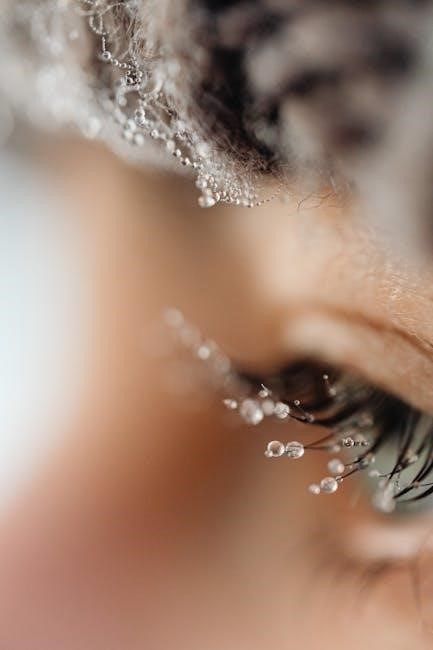
Yellow/Orange Lenses
Yellow/orange lenses are ideal for low-light conditions‚ enhancing depth perception and contrast while reducing glare. They are particularly beneficial for activities like cycling‚ hiking‚ or golf‚ where seeing subtle terrain details is crucial. The warm tint of these lenses can improve visual clarity in cloudy or overcast environments‚ making them a great choice for outdoor sports. However‚ they may slightly distort color perception‚ which could be a drawback for tasks requiring precise color accuracy. Despite this‚ their ability to boost visibility in dim lighting makes them a popular option for early morning or late evening activities. Overall‚ yellow/orange lenses are a practical and stylish choice for enhancing performance in specific lighting conditions.
Red/Pink Lenses
Red/pink lenses are known for their soothing effect on the eyes‚ particularly in bright environments. They enhance depth perception and reduce glare‚ making them suitable for activities like golf or baseball‚ where judging distances is important. These lenses also filter out blue light‚ which can improve comfort during prolonged exposure to sunny conditions. However‚ they may not be the best choice for everyday use‚ as they can slightly alter color perception. Despite this‚ their unique benefits make them a popular option for specific sports and outdoor activities‚ offering both functional and stylish advantages for those who prefer a distinctive tint. They are also a good choice for individuals seeking a lens color that stands out while providing reliable performance. Red/pink lenses are a niche but effective option for enhancing visual clarity in certain settings.
Other Lens Colors
Beyond the popular gray‚ green‚ brown‚ and blue options‚ there are several other lens colors that cater to specific needs and preferences. For instance‚ gold‚ yellow‚ and orange lenses are ideal for low-light conditions‚ enhancing depth perception and reducing glare. However‚ they may slightly distort colors‚ making them less suitable for activities requiring precise color accuracy. Blue lenses are often chosen for their stylish appeal but may not offer the same level of contrast enhancement as other colors. Additionally‚ mirrored lenses combine fashion with functionality‚ reducing glare and offering a trendy look. These unique tints provide versatility‚ allowing users to customize their sunglasses for both performance and personal style‚ ensuring there’s a lens color to suit every lifestyle and preference.
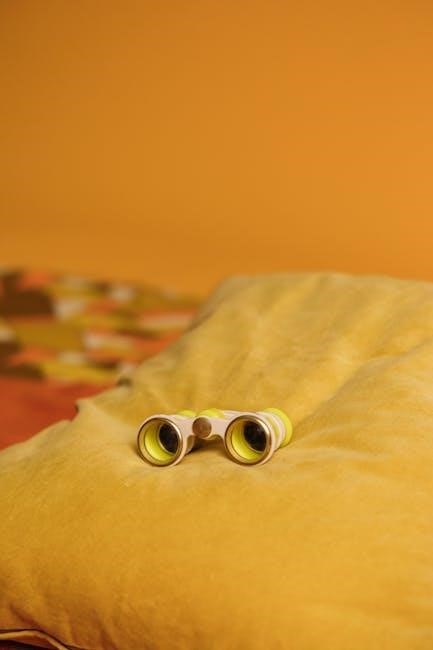
Lens Color and UV Protection
The lens color of your sunglasses plays a significant role in determining the level of UV protection they provide. Darker tints‚ such as black or brown‚ generally offer higher UV protection because they absorb more light and block out harmful UV rays more effectively. However‚ it’s important to note that the tint intensity alone doesn’t guarantee complete UV protection; the lens material and coatings also play a critical role. Always ensure your sunglasses provide 100% UV protection‚ regardless of their tint. Lighter-colored lenses can still offer excellent UV protection if properly designed. Additionally‚ polarized lenses can enhance UV protection by reducing glare from reflective surfaces‚ further safeguarding your eyes in bright environments.
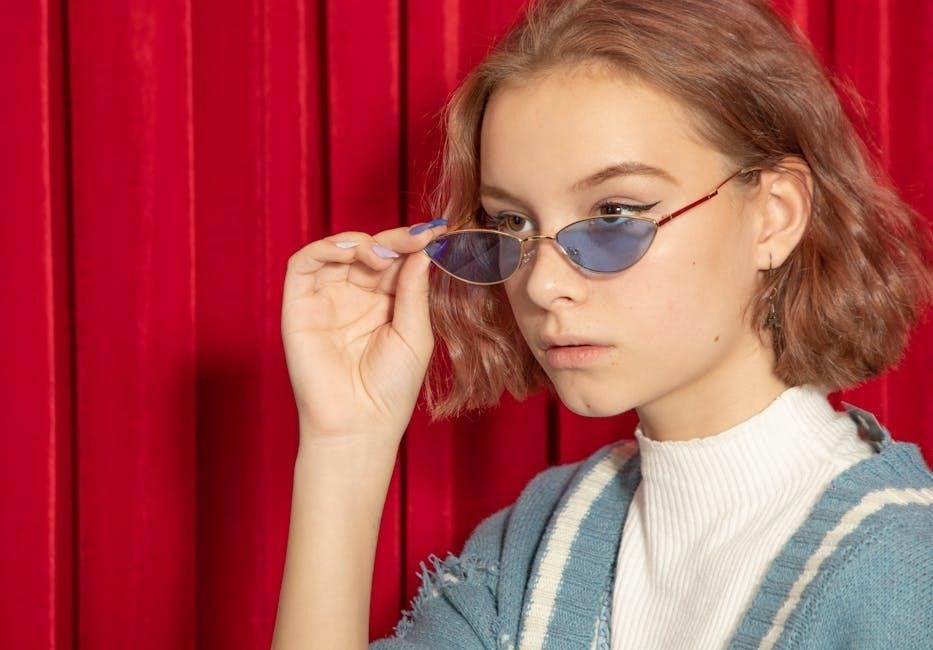
Tint Intensity
Tint intensity refers to the darkness of the lens color‚ which affects how much light is transmitted to the eyes. Lightly tinted lenses (around 20% intensity) are ideal for cloudy or low-light conditions‚ while medium tints (50% intensity) are versatile for everyday use. Darker tints (80% intensity) are best for bright‚ sunny environments‚ reducing glare and eye strain. The percentage of tint intensity indicates the amount of visible light that reaches the eyes‚ with darker tints blocking more light. However‚ tint intensity doesn’t directly correlate with UV protection‚ as this depends on the lens material and coatings. Balancing tint intensity with your visibility needs ensures optimal comfort and protection for your eyes.
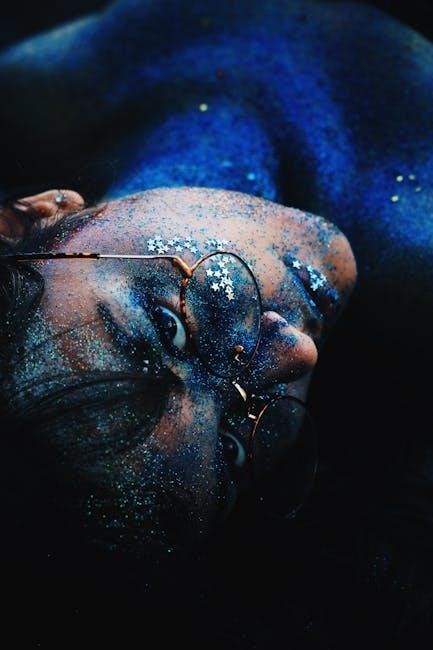
Activities and Lens Color Choice
Choosing the right lens color for your activities ensures optimal performance and comfort. For instance‚ amber or brown lenses are ideal for golf and baseball‚ enhancing depth perception and reducing glare. Green lenses excel in low-light conditions‚ brightening shadows and improving contrast‚ making them perfect for fishing or hiking. Blue lenses are suited for water sports‚ reducing reflections and enhancing clarity. Gray lenses are versatile for everyday use‚ while yellow or orange lenses are best for low-light activities like cycling. By matching your lens color to your activity‚ you can enhance your visual experience‚ reduce eye strain‚ and perform at your best in various environments.
Selecting the right sunglass lens color is a decision that combines style‚ functionality‚ and personal preference. Each lens tint offers unique benefits tailored to specific activities and lighting conditions. Whether you prioritize UV protection‚ enhanced contrast‚ or improved depth perception‚ there’s a lens color designed to meet your needs. By understanding how different tints perform in various environments‚ you can choose sunglasses that elevate your comfort‚ clarity‚ and performance. Remember‚ the right lens color not only enhances your visual experience but also protects your eyes‚ making it a crucial choice for everyday wear and outdoor adventures alike.
